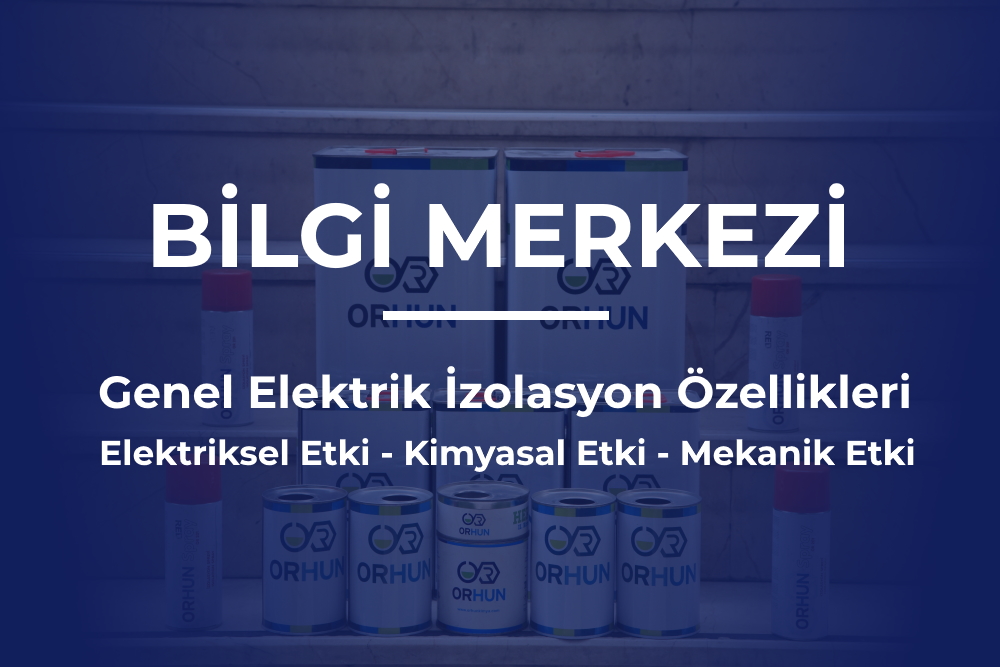Information Center
GENERAL ELECTRICAL INSULATION FEATURES
1- To prevent or minimize the effect of humidity
2- Tighten the conductors together
3- Reducing mechanical vibration
4- Taking the air out of the system
5- Increasing the quality of electrical resistance and insulation
6- Dust, dirt etc. in the winding gaps. creating a hard and smooth surface to prevent it from being sucked in
7- If finished, to give a pleasing appearance
8- It should have good binding properties and the winding should be able to enter the gaps between them. It should be hard enough to withstand vibrations and centrifugal forces.
9- It should be heat resistant and should not soften at operating temperature.
10- It should not be permeable to moisture and should be resistant to transformer oils and lubricating oils.
ELECTRICAL EFFECT:
A complete failure of an insulation material or a decrease in its efficiency is due to the following reasons.
BURNING:
It occurs when an excessively high voltage is applied to the insulating material. The test that determines the degree of fire resistance of the insulation material is called the “Dielectric strength test”.
Electrical strength is the ability of the insulating material to withstand electrical voltage. This value is expressed in Volts/mile.
CONDUCTIVITY ON THE SURFACE:
The property that determines this factor is called surface resistance.
TRANCKING:
When an insulating material operating under an electrical voltage is exposed to conditions that pollute the surface such as humidity, salty environment or conductive dust, a tendency to current flows on the surface, which creates conductive traces similar to tree branching. As a result, the material becomes obsolete.
DIELECTRIC LOSS:
It is another factor that affects disabling. It is the energy loss that occurs in the insulation material exposed to variable electrical voltages. (It is in the form of heat).
VOLTAGE RESISTANCE:
This property is considered a type of electrical aging. Under the influence of electricity, the insulating material loses its properties by undergoing chemical changes.
MAKING ARC:
Arcing can be defined as deterioration due to discharges.
CHEMICAL EFFECT:
The harmful effects in this group are mainly as follows.
Humidity of the air – Metal or coal dust
– Sale environment
– Oils used as lubricants or coolants
– Chemicals
The most damaging effect on insulation varnishes is the moisture effect. Due to the polar nature of water, the electrical resistance of the insulation material decreases as a result of the penetration of moisture into the organic insulation materials. The amount of moisture an electrical part absorbs depends on the type and structure of this part. Although an insulation material is classified as completely moisture-proof, it may not be suitable for communication devices operating at certain frequencies. As a result of new developments in the moisture absorption and permeability of these types of insulation materials, synthetic polymers with less moisture absorbing properties are used instead of cellulosic type insulation materials.
MECHANICAL EFFECT:
The mechanical forces faced by insulating varnishes are important and must be taken into account when designing the device or selecting parts. The types of mechanical effects encountered in practice are as follows;
Flank formation between conductors and other metallic parts with magnetic flux caused by the interference of varying magnetic forces
Movements caused by differential expansion and contraction between parts, especially during heating and cooling.
Very strong centrifugal forces in rotating machines (eg electric motors).
Forces coming from outside to the device (such as large electro magnets or motors used to operate vibrating machines).
Forces applied to insulating varnishes during the construction of bending, stretching and bending electrical devices.
